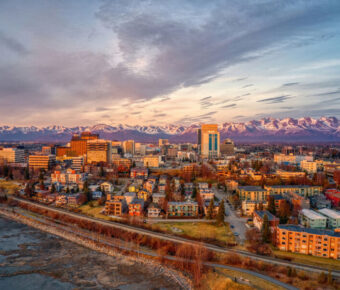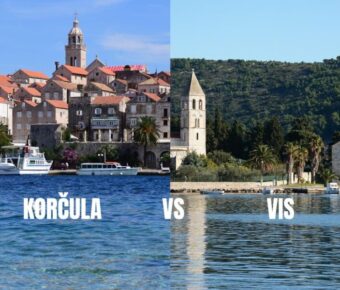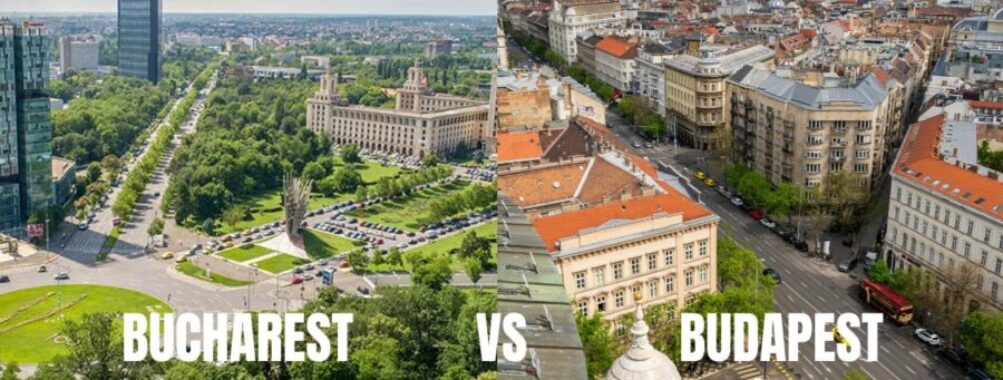
Bucharest vs Budapest: 7 Key Differences for Your Next Trip
Trying to pick between Bucharest and Budapest? I get it—their names trip up even seasoned travelers, but honestly, the adventures you’ll find in each couldn’t be further apart. If you’re after grand architecture, legendary thermal baths, and a nightlife that doesn’t quit, Budapest wins hands-down. But if you crave leafy parks, budget-friendly prices, and a wild mashup of communist history and modern vibes, Bucharest’s your spot.
The moment you step off the train or plane, the differences hit you. Budapest glitters with the Danube River winding through its heart. Bucharest, meanwhile, draws you in with its Old Town’s tangled lanes and the jaw-dropping Palace of Parliament. I’ve wandered both cities more times than I can count, and trust me, they each march to their own beat. Which one matches your mood? That’s the real question.
Table of Contents
- Key Takeaways
- Quick Facts and Essential Differences
- Geographic Location and Overview
- Language and Currency
- Why People Confuse Bucharest and Budapest
- History and Cultural Identity
- Historical Backgrounds
- Cultural Influences and Heritage
- Communist Legacies
- Must-See Landmarks and Attractions
- Iconic Sights in Budapest
- Top Attractions in Bucharest
- Museums and Art Galleries
- Architectural Styles and Cityscapes
- Budapest’s Grand Architecture
- Bucharest’s Eclectic Mix
- Food, Drink, and Street Life
- Traditional Romanian Dishes
- Hungarian Culinary Specialties
- Street Food and Café Culture
- Nightlife and Entertainment
- Nightlife in Bucharest
- Nightlife in Budapest
- Theaters and Live Music
- Getting Around and Cost of Living
- Public Transportation Systems
- Bike Paths and Walkability
- Affordability and Daily Expenses
- Frequently Asked Questions
- What are the top cultural differences between Bucharest and Budapest?
- Can you highlight the unique architectural styles of Bucharest compared to Budapest?
- What are the must-visit historical landmarks in Bucharest and Budapest?
- How does the nightlife in Bucharest compare to that in Budapest
- What local cuisines should travelers try in Bucharest and Budapest to experience the local flavor?
- Could you suggest the best times of year to visit Bucharest and Budapest for weather and events?
- Book Your Dream Experience
- More Travel Guides
Key Takeaways
- Budapest stuns with iconic sights and old-world beauty
- Bucharest grabs you with affordability and a quirky, eclectic spirit
- Both cities serve up unique food, nightlife, and everyday surprises
Quick Facts and Essential Differences
People often mix up Bucharest and Budapest just because their names are so similar. But honestly, they’re worlds apart. One lives in Eastern Europe, the other in Central Europe, and each has its own language, culture, and—let’s just say—personality.
Geographic Location and Overview
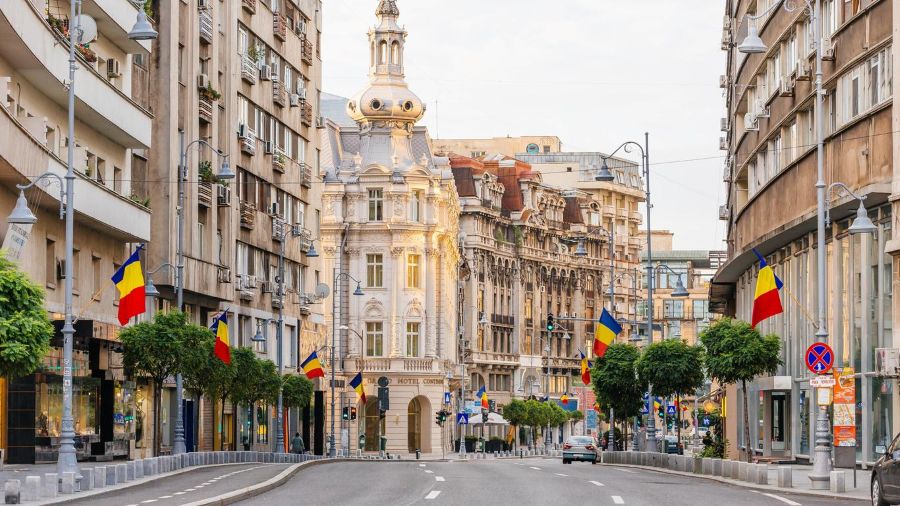
Bucharest is Romania’s capital, tucked away in the country’s southeast corner. The Dâmbovița River snakes through town, and you’ll find a strange blend of wide boulevards, blocky communist-era buildings, and little old churches that seem to pop up out of nowhere.
Budapest, meanwhile, sits in Hungary, right in the heart of Central Europe. The Danube River slices Budapest in two, with Buda on one bank and Pest on the other. That split? It’s not just about geography—it shapes the whole feel of the city.
Budapest feels more polished, with castles and a Parliament building that practically beg for photos. Bucharest? It’s a little gritty, a little wild, and honestly, that’s part of its charm. Especially if you like cities that don’t feel like they’ve been scrubbed clean for tourists.
Here’s a quick side-by-side:
| City | Country | Region | River | Vibe |
|---|---|---|---|---|
| Bucharest | Romania | Eastern Europe | Dâmbovița | Lively, eclectic mix |
| Budapest | Hungary | Central Europe | Danube | Elegant, historic |
Language and Currency
Language? Couldn’t be more different. In Bucharest, locals speak Romanian—it’s related to Italian and French, so you might catch a familiar word here and there. Budapest’s language is Hungarian, and if you’ve ever tried to read a Hungarian menu, you know it’s a whole different universe.
Currency wise, Romania runs on the Romanian leu (RON), while Hungary sticks with the Hungarian forint (HUF). No euro in daily use, though in Budapest, you might find a few touristy places that grudgingly take it.
Most young people speak at least some English in both cities, but learning a “mulțumesc” or “köszönöm” goes a long way. Locals usually crack a smile, even if you butcher the pronunciation. It’s the effort that counts, right?
Why People Confuse Bucharest and Budapest
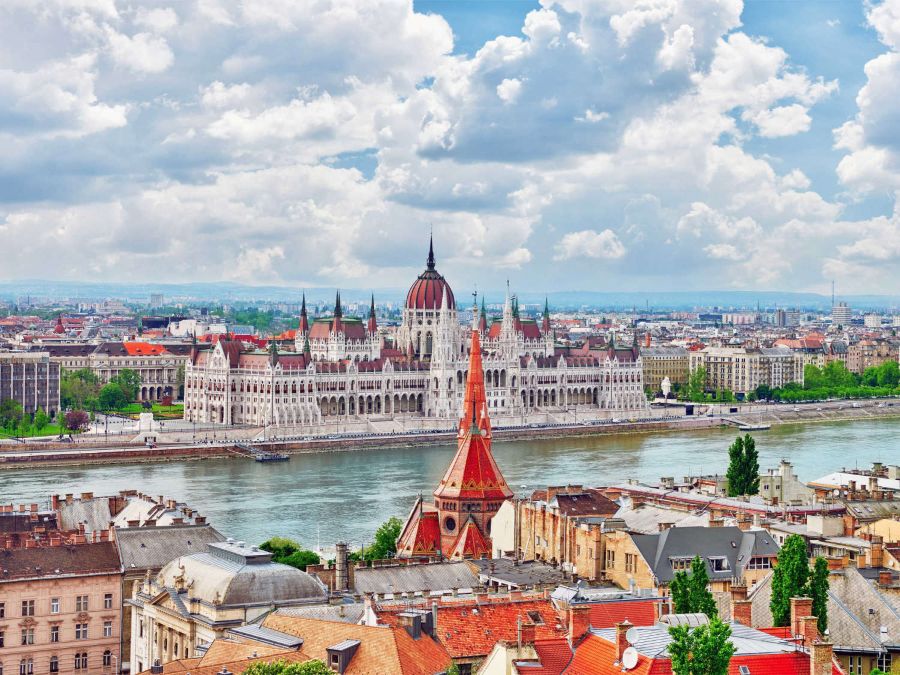
Honestly, it’s mostly the names. Say them out loud a few times, especially after a long-haul flight, and you’ll see what I mean. I’ve heard stories of musicians and even politicians showing up in the wrong city. Oops.
Both are capital cities, both sit somewhere in the “east” of Europe, and unless you’re a geography nerd, it’s easy to get them tangled. They’re about 800 kilometers apart, which is close enough for confusion but far enough that you really don’t want to land in the wrong place.
Tourism boards don’t help much. Both cities hype up their architecture, nightlife, and culture, so the brochures start to sound the same. But when you actually visit? The differences are glaring. Bucharest leans Balkan, Budapest is pure Central Europe.
Need a memory hack? Bucharest = Romania, Budapest = Hungary. Or just remember, “Buda has a Pest”—it’s silly, but it works. Trust me, you don’t want to be the one explaining to airport staff that you meant the other city.
For a deeper dive, check out this Bucharest vs. Budapest breakdown.
History and Cultural Identity
The two cities grew up in completely different worlds, and you can feel it when you stroll their streets. Their food, architecture, and even the way the day unfolds all reflect wild twists of history and culture.
Historical Backgrounds
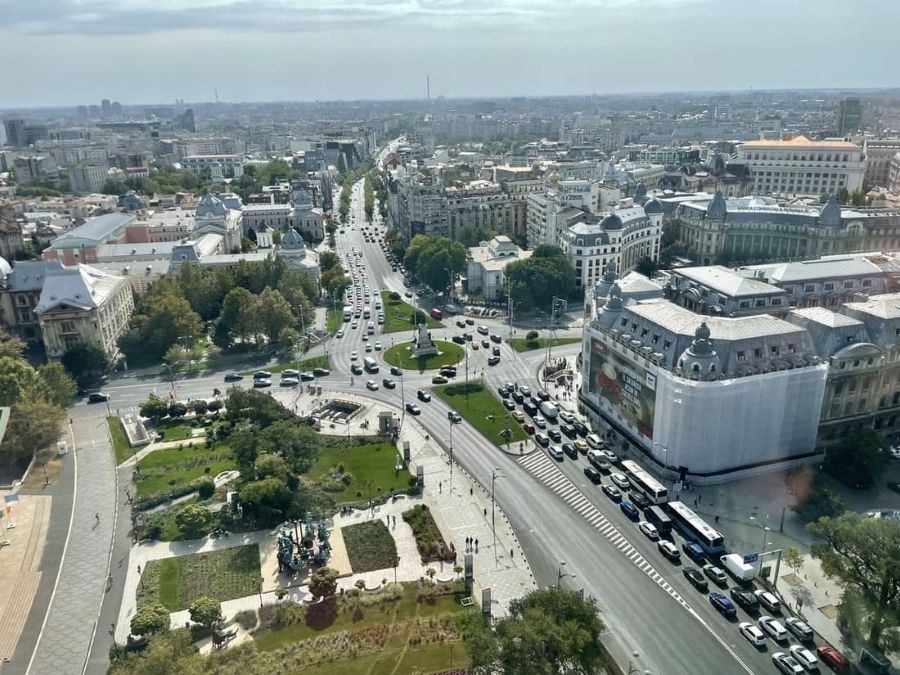
Budapest’s story follows the Danube and the old Austro-Hungarian Empire. The city as we know it came together in 1873, when Buda, Pest, and Óbuda merged. That’s why you’ll spot so much 19th-century swagger—think broad boulevards and bridges that wouldn’t look out of place in Vienna.
Bucharest’s roots stretch back to the 15th century. It became Romania’s capital in 1862 and, for a while, people called it the “Paris of the East” thanks to its French-style boulevards and Art Nouveau mansions.
When you walk around, you really feel the difference. Budapest oozes imperial grandeur. Bucharest? It’s a wild patchwork—medieval churches, Parisian mansions, and hulking communist blocks all crammed together. Sometimes it feels chaotic, but that’s half the fun.
Cultural Influences and Heritage
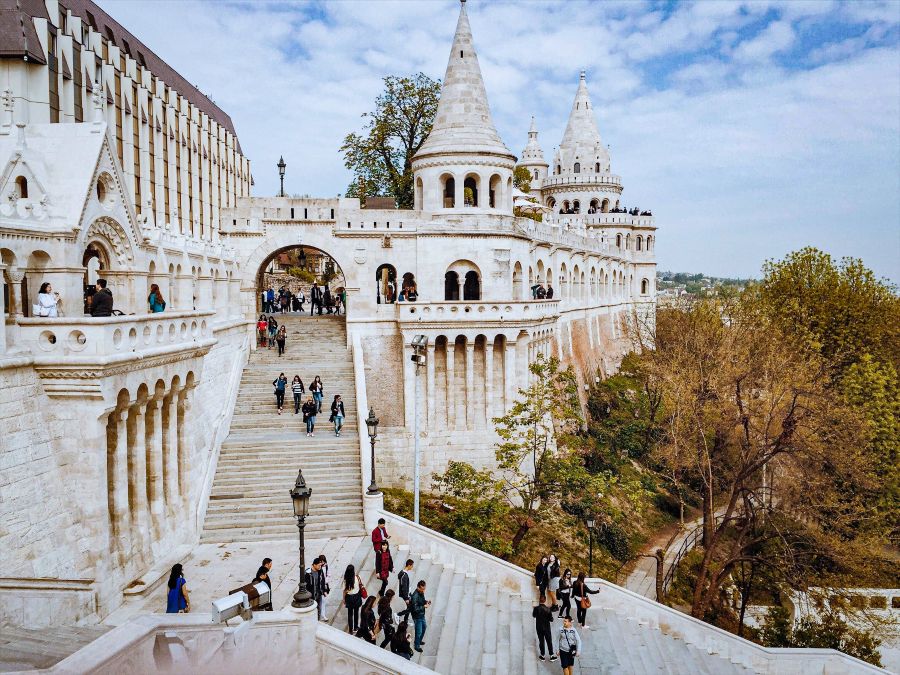
Budapest still leans into its Austro-Hungarian roots. You’ll hear it in the music, taste it in the coffeehouses, and see it in the food—goulash, paprika stews, and pastries that make you want to linger all afternoon. Their festivals love to show off this heritage, and the famous thermal baths? Those are a gift from the Ottomans.
Bucharest, meanwhile, feels more Balkan and Latin. Romanian food brings you sarmale (stuffed cabbage rolls) and mici (grilled sausages), usually washed down with a shot of țuică. The language is a Romance one, so if you know Italian or French, you’ll catch echoes.
If you’re an architecture geek, Budapest will dazzle you with its Gothic Revival and Baroque icons—the Parliament, Buda Castle, and more. Bucharest is trickier to pin down. One street feels like Paris, the next like old Soviet Moscow. It keeps you guessing, and I kind of love that.
Communist Legacies

Communism left its fingerprints on both cities, but in very different ways. In Budapest, the old regime fell in 1989, but most of the city’s grand architecture survived. So, you still get that Austro-Hungarian look everywhere you turn.
Bucharest? The 1980s under Ceaușescu changed everything. The Palace of the Parliament looms over the city—it’s massive, a bit surreal, and definitely controversial. Whole neighborhoods vanished to make room for it.
You can’t miss the wide, stark boulevards and the concrete apartment blocks in Bucharest. Some people find them a little bleak; others find them weirdly fascinating. Love them or hate them, they’re a huge part of the city’s story.
Must-See Landmarks and Attractions
Both capitals pack in a wild mix of history, architecture, and culture. You’ll find fairy-tale castles and steamy baths in one; in the other, grand boulevards, communist-era giants, and hidden gems tucked in winding streets.
Iconic Sights in Budapest
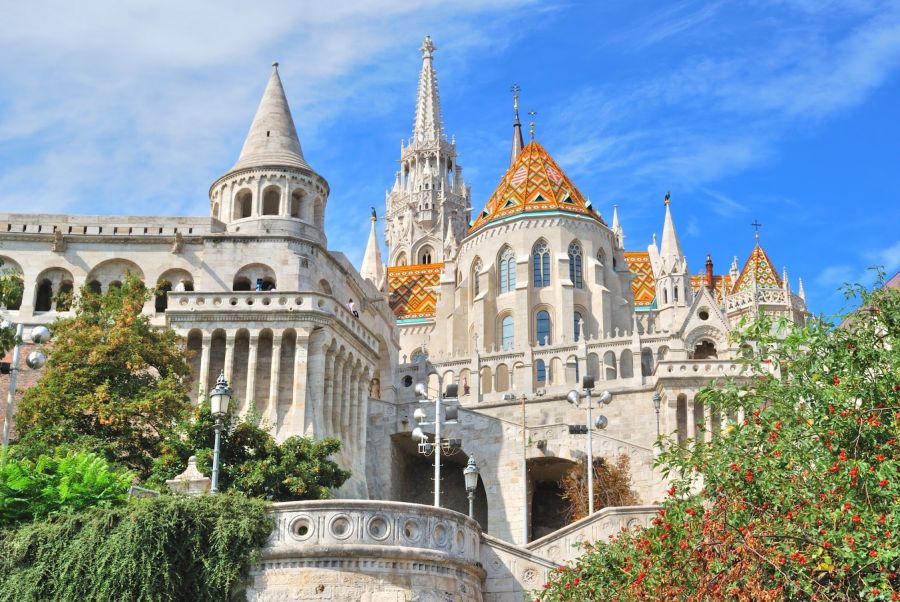
Kick things off with Buda Castle, perched above the Danube. It’s not just a castle—it’s a whole district, with cobblestones and killer views across to Pest.
Wander over to Fisherman’s Bastion—those white turrets look like they jumped out of a fantasy movie. Nearby, Matthias Church pops with a colorful tiled roof that’s even more striking in person, especially when the sun hits just right.
Down by the river, the Hungarian Parliament Building steals the show. Its Gothic Revival spires and nighttime glow across the water are unforgettable.
Don’t leave without trying the city’s famous baths. The Széchenyi Baths are the biggest, with outdoor pools steaming even in winter. Gellért Baths feel more Art Nouveau and a bit fancier. If you love markets, the Great Market Hall is a must—think paprika, sausages, and all sorts of local treats. For guided tours and day trips, GetYourGuide has you covered.
Top Attractions in Bucharest

The Palace of Parliament dominates Bucharest’s skyline. It’s the second-largest administrative building in the world, and walking inside is kind of mind-blowing. It’s massive, it’s strange, and it tells you a lot about the city’s recent past.
Old Town is where the buzz is. Streets like Calea Victoriei blend old palaces with hip cafes. Don’t miss Carturesti Carusel—it’s a multi-level bookstore that feels more like a dreamy art installation. You’ll want to hang out there, even if you’re not a bookworm.
For something quieter, check out the Stavropoleos Monastery—tiny, peaceful, and beautiful. If you love music, the Romanian Athenaeum is stunning inside and out. On sunny days, stroll through Herastrau Park (now King Michael I Park); it’s huge and perfect for lakeside lounging. For local tours, Viator lists plenty of options.
Museums and Art Galleries
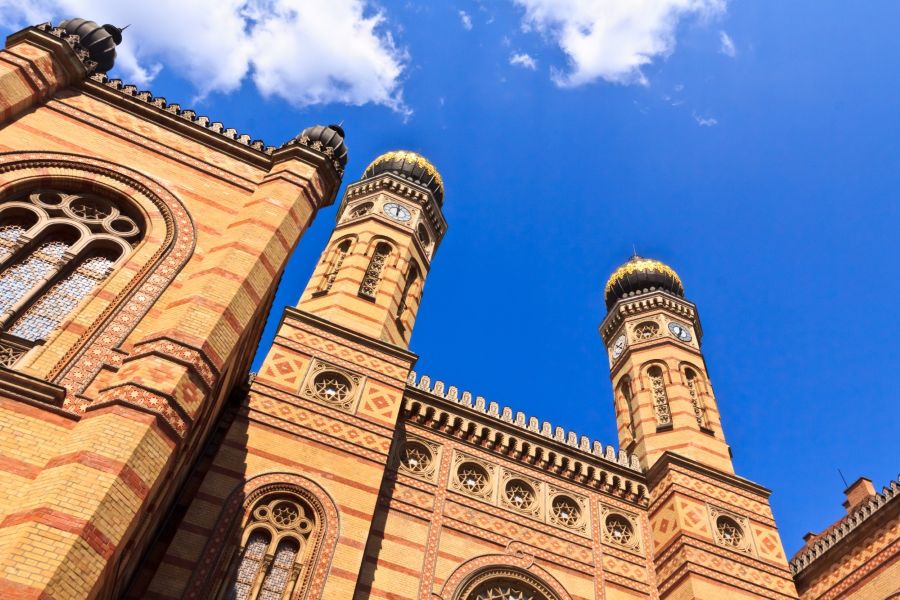
Museum lovers will find plenty to geek out over, but each city has its own flavor. In Budapest, the Museum of Fine Arts houses European masterpieces. The Great Synagogue and its Jewish Museum offer a powerful look at the city’s history.
Bucharest’s gems include the Enescu Museum for music fans, the Cotroceni National Museum (which mixes royal apartments with art), and the National Museum of Contemporary Art—yep, it’s inside the Palace of Parliament. That’s a setting you won’t forget.
Short on time? Pick a couple that match your interests. Art fans will love Budapest’s galleries; history buffs might gravitate to Bucharest’s royal and communist-era museums. Both cities make it easy to balance sightseeing with lazy afternoons in a café, so you won’t feel rushed.
Architectural Styles and Cityscapes
Both cities tell their stories through their buildings. One wows you with monumental riverside landmarks, while the other keeps you guessing with a jumble of neoclassical, communist, and religious architecture.
Budapest’s Grand Architecture
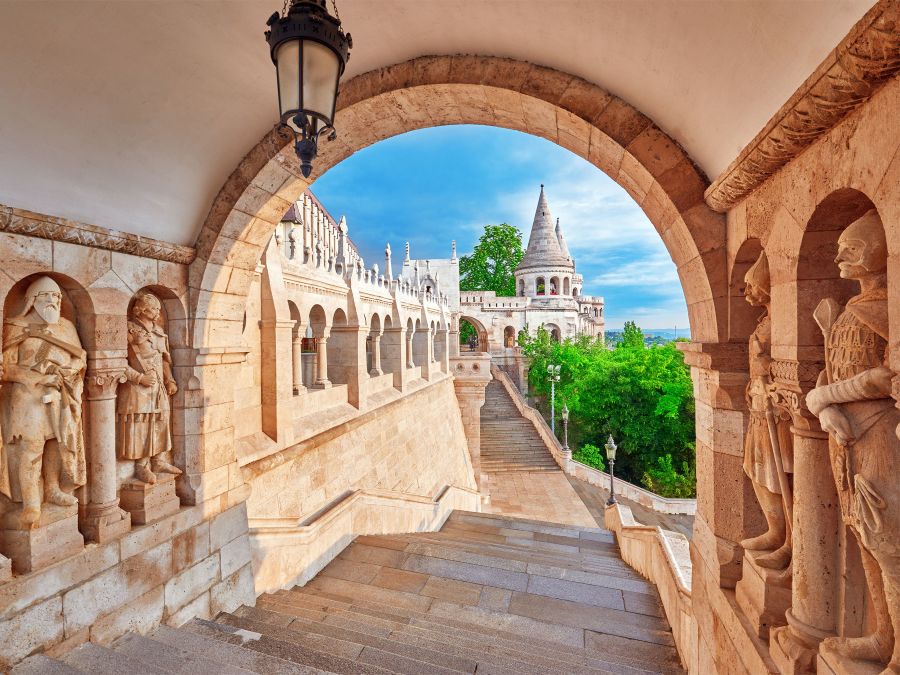
Walking Budapest, you can’t miss how the Danube splits the city. On the Buda side, Buda Castle rises above it all, offering sweeping views and a real sense of Hungary’s royal past. The castle district, with its cobbled lanes and old courtyards, feels almost frozen in time.
Over in Pest, the Hungarian Parliament Building is the star. At night, it glows against the river, all spires and that signature red dome. It’s honestly one of Europe’s most photogenic spots.
I love strolling down Andrássy Avenue—it’s lined with grand 19th-century houses, theaters, and cafés. No wonder people call Budapest the “Paris of the East.” The city’s architecture isn’t just pretty—it’s a living, breathing reminder of all the layers of history and culture woven into daily life.
Bucharest’s Eclectic Mix
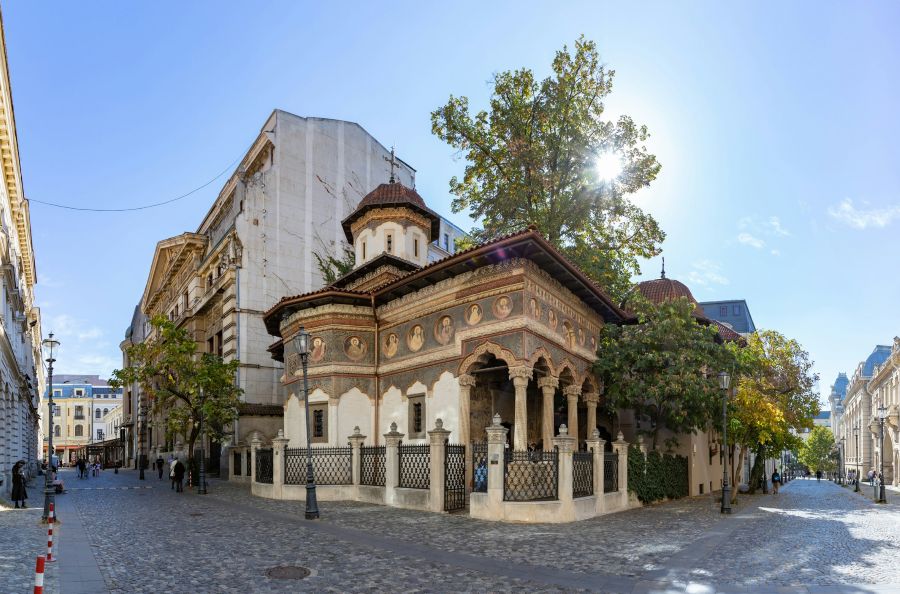
Bucharest just hits you differently. Instead of one dominant style, you get a wild patchwork of influences that never quite lets you settle. The Palace of the Parliament towers over the city—honestly, it’s massive, and you can feel the weight of history (and concrete) as soon as you spot it. Step inside, and you’re wandering through endless marble corridors and glittering chandeliers, a maze from Romania’s communist days.
Yet, wander a few blocks and you’ll stumble onto the tiny Stavropoleos Monastery. It’s quiet, carved in stone, and feels like a totally different world. That kind of contrast is what keeps Bucharest so intriguing.
The Romanian Athenaeum stands out too. Locals love it, and once you catch a concert under its grand dome, you’ll get why. Some folks still call Bucharest “Little Paris” for its boulevards and the Arch of Triumph, but honestly, the city’s mix of crumbling facades and shiny glass towers gives it a quirky, unpredictable personality.
Food, Drink, and Street Life
Both cities serve up their own flavors—literally and figuratively. In one, you’re digging into hearty stews and rustic comfort food. In the other, sweet pastries and fried dough rule the streets, usually paired with a glass of local wine or a shot of something strong.
Traditional Romanian Dishes

Romanian food? It’s heavy, filling, and seriously comforting. Grab a table in Bucharest, and chances are someone will bring you sarmale (those pork-and-rice cabbage rolls) with a scoop of mămăligă—think Romanian polenta. It’s the kind of dish you crave when the weather’s cold and gray.
You’ll see mici or mititei all over—grilled, garlicky meat rolls, usually with mustard and bread. Backyard barbecue, street stall, doesn’t matter—they’re everywhere.
I once grabbed a plate of mici near Herăstrău Park, and the smoky aroma practically dragged me over. Pair it with a local beer, and you’ve nailed a classic Bucharest lunch.
Hungarian Culinary Specialties

Hungarian food goes bold, no apologies. Paprika-heavy everything, and goulash is the national obsession—a beefy, spicy stew you’ll spot in both upscale and hole-in-the-wall Budapest spots.
But honestly, Budapest’s street snacks are the real show. Lángos is a deep-fried flatbread slathered in sour cream and cheese—messy, addictive, and perfect after a day on your feet.
For dessert, there’s kürtőskalács (chimney cake). It’s a pastry spun over open flames, caramelized and crunchy on the outside, sometimes dusted with cinnamon or cocoa. Honestly, it’s one of those treats that just makes you smile.
Street Food and Café Culture
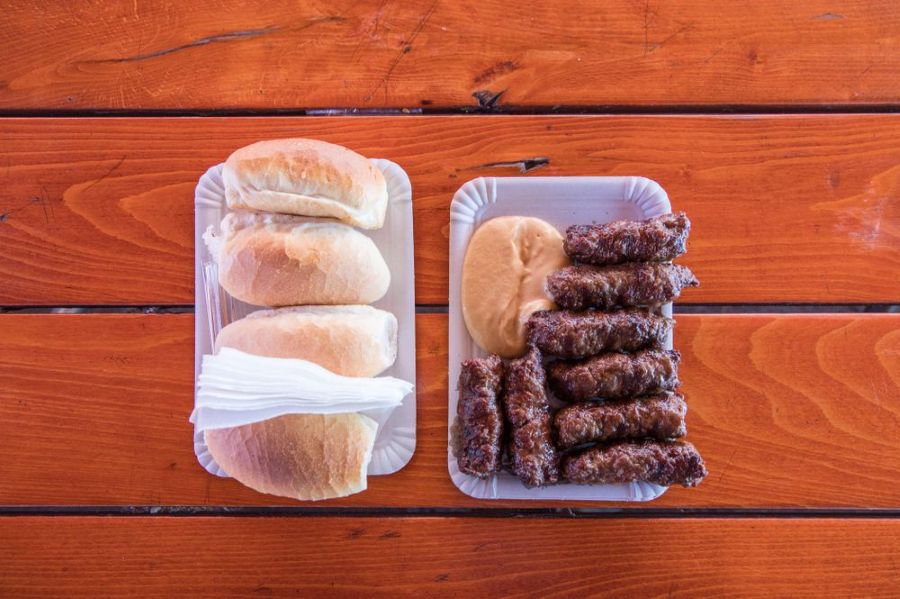
Street food really reflects the soul of both cities. In Bucharest, carts sell mici, pretzels, and even shawarma (thanks to all those influences). It’s cheap, casual, and you usually end up eating it standing up with friends.
Budapest organizes its street life around cafés and those famous ruin bars. The ruin bars, tucked inside abandoned buildings, ooze character. Grab a lángos outside, then slip into a bar with mismatched chairs and graffiti everywhere.
Coffee culture runs deep in both capitals. Bucharest’s cafés double as creative hangouts—laptops everywhere, lots of chatter. Budapest leans old-school, with historic coffeehouses under ornate ceilings, and sipping an espresso there feels like time travel. Both vibes are worth a try, depending on your mood.
If you want a more detailed comparison on food and nightlife, check out this guide on Bucharest vs Budapest.
Nightlife and Entertainment
Both cities keep the energy going well past midnight. You’ll find bars, clubs, and live shows, but each city has its own after-dark flavor—Bucharest goes all-in on all-night revelry, while Budapest mixes quirky venues with a laid-back edge.
Nightlife in Bucharest

If you’re into loud, long nights, Bucharest is your playground. The Old Town (Centrul Vechi) is the center of it all—bars and clubs packed tight, music blaring until sunrise.
The variety is wild. You can hop from a chill pub to a full-on dance club in minutes. Places like Control Club and Expirat anchor the alternative scene, while the north side near Herăstrău Park feels a bit fancier.
Locals treat weekends like an endurance sport. Don’t be shocked if you end up at a shawarma stand at 5 a.m.—it’s just what people do here: cheap, social, and a little bit chaotic, but in the best way.
Nightlife in Budapest
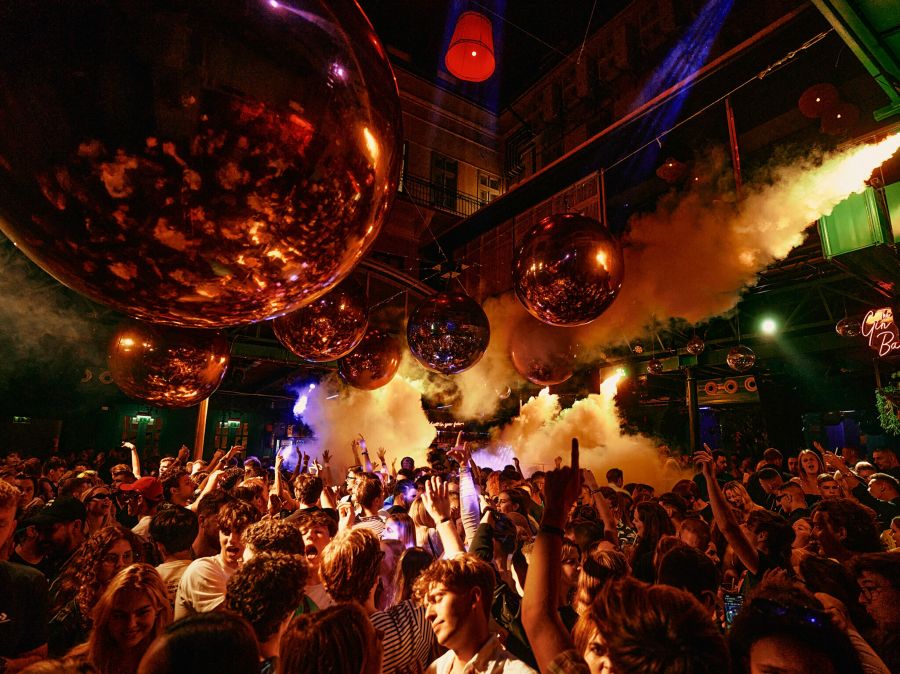
Budapest’s nightlife feels more creative, less frantic. Those ruin bars are the main event—abandoned spaces transformed into funky, art-filled hangouts. Szimpla Kert is the original, and while it’s a bit touristy these days, smaller ones still have that intimate, hidden vibe.
Wine and cocktails are big here too. Rooftop bars, like the one at Aria Hotel, give you killer views of the Parliament and St. Stephen’s Basilica—definitely more refined than the club scene.
There’s plenty of dancing if you want it, from techno basements to jazz bars. In summer, you can even party in a thermal bath—yep, dancing in a hot spring with a DJ spinning. Only in Budapest.
Theaters and Live Music

Culture lovers, you’re covered. Bucharest’s Romanian Athenaeum hosts classical concerts in a jaw-dropping hall. Smaller spots like Green Hours put on jazz and indie shows for a more up-close vibe.
Budapest’s Hungarian State Opera House is a stunner, worth a visit even if you’re not into opera. The city’s festival scene rocks too, with Sziget Festival drawing big-name acts every summer.
Live music pops up all over both cities, from indie to electronic. The underground scenes thrive, and if you’re into street art or alternative culture, you’ll find music woven into those spaces too. Sometimes the best nights are the ones you just stumble into.
Getting Around and Cost of Living
Budapest and Bucharest both make it pretty easy to get around, but the feel is totally different. One city relies on a slick metro and tram network, while the other mixes modern upgrades with quirks that travelers notice right away. Daily expenses also vary, and your money can go further in one place than the other.
Public Transportation Systems
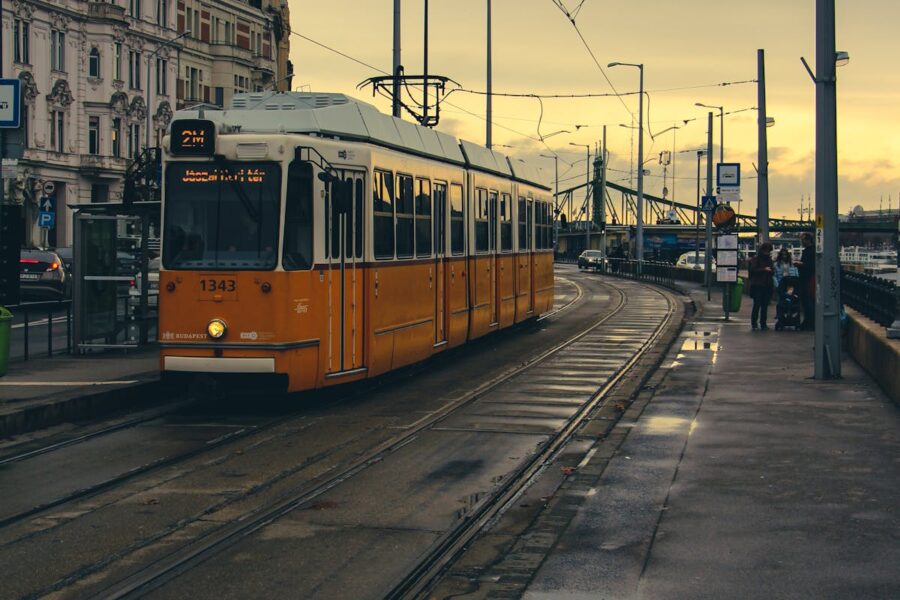
Budapest’s public transport is super reliable—four metro lines, tons of trams, and buses that actually show up on time. Riding Tram 2 along the Danube almost feels like a free tour, honestly.
Bucharest’s metro is smaller, with four main lines. It’s clean and feels safe, but doesn’t cover as much ground as Budapest’s. Buses and trams fill in the rest, though they get packed during rush hour. I once squeezed onto a tram near Piata Unirii and thought, “Wow, this is like New York at rush hour—crowded, but full of life.”
If you’re planning your trip and want easy airport transfers, both cities offer them, but Budapest’s connections are smoother. For car rentals or airport taxis, check flights and rental cars in advance—local taxi apps can be hit or miss.
Bike Paths and Walkability
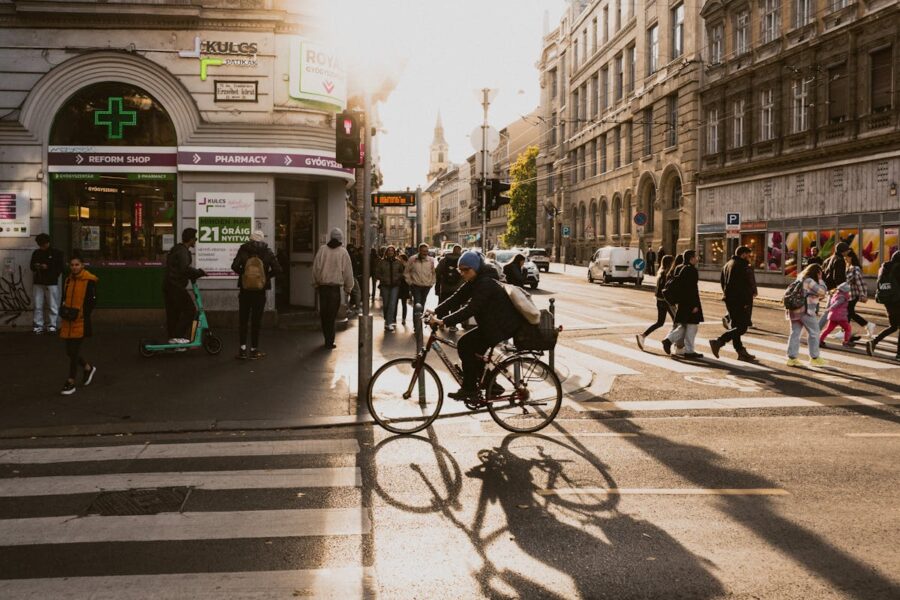
Budapest is way more bike-friendly. The city built out real bike lanes, especially along the river, and the MOL Bubi bike share is simple to use. You can pedal from Buda Castle to Margaret Island without too much stress.
Bucharest is still catching up. There are some bike paths, but they’re often inconsistent or shared with pedestrians. I’ve biked around Herăstrău Park and felt safe, but once you hit the main roads, things get dicey.
Walkability matters too. Central Budapest is compact and easy to explore on foot—places like the Jewish Quarter and Andrássy Avenue are perfect for wandering. Bucharest’s Old Town is walkable, but outside that, crossing big intersections can be a headache. If you’re staying out by Băneasa Shopping City, you’ll probably rely on taxis or buses instead of walking.
Affordability and Daily Expenses
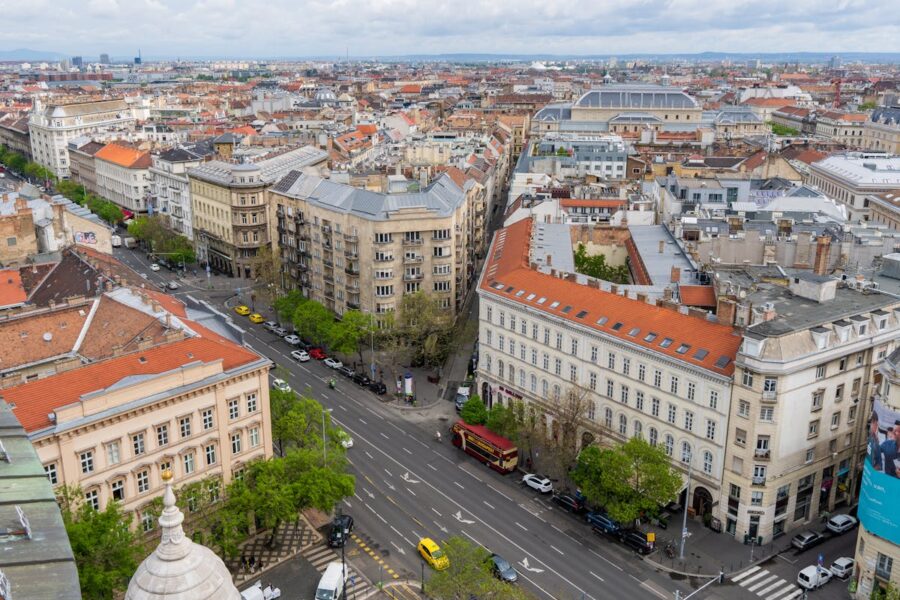
Bucharest is generally easier on your wallet than Budapest. Housing, transportation, groceries—they all cost less, so your budget stretches further. Recent comparisons show the cost of living is about 20% lower in Bucharest, especially for rent and daily stuff.
Budapest will cost you a bit more for housing, but for short visits, it’s not a dealbreaker. Eating out is still a bargain compared to Western Europe, though city-center cafés can sneak up on you. I’ve found that ruin pubs in Budapest are surprisingly affordable, especially if you stick to local brews.
Bucharest’s restaurants are more spread out. You can grab a filling meal in a neighborhood joint for less than a fast-food combo in Budapest. Transportation’s cheaper too—metro and bus fares undercut Budapest’s prices. When you’re booking hotels or apartments, you’ll really see the price difference while browsing accommodation deals.
Both cities feel safe in the central areas, but keep an eye on your stuff in crowded trams or nightlife hotspots. If you’re staying longer, Bucharest’s lower daily expenses mean you can splurge a bit more on day trips or shopping.
Frequently Asked Questions
Traveling through Bucharest and Budapest gives you two very different slices of Eastern Europe. You’ll notice contrasts in culture, architecture, food, and nightlife, but both cities offer memorable experiences if you know where to look.
What are the top cultural differences between Bucharest and Budapest?
Bucharest feels more Balkan, with a raw energy and hints of its communist past. Locals can be blunt, but once you break the ice, they’re warm and welcoming.
Budapest comes across as more polished and Central European. The city wears its Austro-Hungarian heritage proudly, from its traditions to its festivals and the way people move through daily life.
Can you highlight the unique architectural styles of Bucharest compared to Budapest?
People call Bucharest the “Little Paris” for its French-inspired boulevards and Belle Époque buildings. But you’ll also see massive communist blocks and the gigantic Palace of Parliament dominating the skyline.
Budapest, meanwhile, shows off with Gothic Revival, Art Nouveau, and Baroque. The Parliament building along the Danube is iconic, and the city’s bridges tie everything together with real style.
What are the must-visit historical landmarks in Bucharest and Budapest?
In Bucharest, don’t miss the Palace of Parliament, Romanian Athenaeum, and the Old Town packed with Orthodox churches and 19th-century mansions. Walking down Calea Victoriei feels like flipping through a history book.
Budapest’s standouts include Buda Castle, Fisherman’s Bastion, and St. Stephen’s Basilica. Take a stroll along the Danube promenade at night—seeing the Parliament all lit up is honestly unforgettable.
How does the nightlife in Bucharest compare to that in Budapest
Bucharest’s nightlife is wild, cheap, and packed into the Old Town. You’ll find pubs, rooftop bars, and clubs that go until sunrise, often with fewer tourists than Budapest.
Budapest’s nightlife feels more international and curated. The ruin bars in the Jewish Quarter are legendary, and the clubs attract DJs from all over Europe. It’s a bit more polished than Bucharest’s raw, anything-goes vibe.
What local cuisines should travelers try in Bucharest and Budapest to experience the local flavor?
When you land in Bucharest, you’ve gotta try sarmale—those cabbage rolls packed with meat are just classic Romanian comfort food. I always go for mici too, those juicy grilled minced meat rolls you’ll spot at almost every street corner.
Polenta with cheese and sour cream? Trust me, it’s way better than it sounds. If you’re into hearty, rustic dishes that feel like a hug from someone’s grandma, Bucharest totally delivers.
Now, Budapest—wow, where do I even start? Goulash is everywhere, and honestly, it’s a must. The paprika-heavy stews here just warm you up from the inside out.
You absolutely can’t skip lángos, that crispy fried dough slathered with sour cream and cheese. I mean, who can say no to that?
And for dessert lovers, Hungarian pastries might just ruin you for all other sweets in Europe. I still dream about those chimney cakes—soft, sweet, and a little bit addictive.
Could you suggest the best times of year to visit Bucharest and Budapest for weather and events?
Honestly, spring and early autumn feel like the magic window for both Bucharest and Budapest. The weather’s just right—warm enough to stroll outside, and you won’t have to elbow your way through crowds.
In Bucharest, I love May and September for lazy afternoons in leafy parks or sipping coffee at outdoor cafes.
Budapest, on the other hand, really comes alive during the Christmas markets in December.
And if music’s your thing, you can’t miss the Sziget Festival in August—it’s wild, and honestly, one of Europe’s best.
